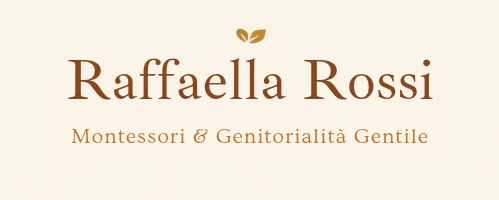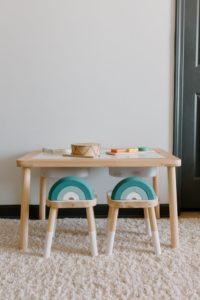Freedom and limits in the Montessori classroom
“The freedom of a child should be limited to the interests of the group to which he belongs. (…) We should therefore prevent a child from doing anything that could offend or hurt others, or that is rude or inconvenient. But everything the rest, any act that can be useful in any other way, can be expressed. Not only should it be allowed, but it should also be observed by the teacher. This is essential “MM (2017)
Freedom with limits is one of the most important and misunderstood principles of the Montessori method. Likewise, the discipline and rules given to children are controversial topics of parenting and education. The idea of giving control to children still seems crazy for too many teachers.
Montessori came to the concept of freedom with limits observing children and understanding their needs. Her observations seemed to show that they were driven by a natural desire to learn and grow, an innate instinct that Montessori calls “horme”. Montessori also noted how this instinct emerged only under certain conditions and found it necessary to remove as many constraints created by adults. To achieve this, she did not eliminate all the rules but created an environment physically suitable for children and prepared in detail to better nurture their development.
Montessori and…not
Although most nurseries have nowadays recognized the value of respecting children’s interests, in reality, the time devoted to free exploration is often short. In Montessori classes, the “work cycle” is the tool that allows children to ensure the space and time of their own property. During a minimum of three hours of spontaneous interaction, they have freedom to choose what, how, for how much and with whom to occupy themselves. During the day, teachers continue to create opportunities to choose within the limit of essential activities such as sitting at the table for the main meals or getting ready to go home. As you may have noticed, up to now, I have not mentioned the Montessori teaching material. Creating an environment in which children can express themselves is, in fact, possible in every class and in every nursery, regardless of which educational method is followed.
Where to start from
First of all, from your attitude. Giving children freedom means trusting them, seeing them as people capable of making decisions and choosing what they need. Trust their instincts, observe and intervene only when necessary. Second, carefully observe the surrounding environment and remove any physical barrier. Make sure the class is challenging, safe and accessible without your continued intervention. Activities must be ready to use, intuitive, tidy and complete. Remove any hazards or obstacles. The same principle must be applied to other parts of the building, such as the bathroom. Make sure that the sink and soap are as accessible as the potty or other necessities. While remaining under our continuous supervision, children will be free to use the area independently.
Free to choose
Freedom of choice arises from the assumption that every child is different. Skills, ways of learning, interests and personalities are merely some characteristics that make each child unique. By choosing how to occupy their time, they have the opportunity to express their skills to the fullest, pursue their interests, develop them and learn at their own pace. The teaching material should reflect the level of development of the children and be suitable ready for self-exploration. Intervene when children ask for your help but otherwise do not disturb their concentration. If you decide to propose teacher-led activities, always give the option to choose whether to participate or not.

Free to move
Movement is not only a necessity for children of all ages, but up to the age of six, it is a fundamental means of learning. Through direct and active interaction with the environment, they absorb new skills and information. To facilitate movement, in addition to easy-to-move tables and chairs, you could use mats for activities on the ground. If possible, create free access to the garden so that more active children can go out running and jumping when they feel the need. From my personal experience, with free choice and time, children end up balancing in a balanced way the time spent in the classroom and that outside.
Free to be
As we have said, each child is a unique human being with immense potential. Being able to express themselves is beneficial to their development as much as their well-being. We listen carefully, value their ideas and the contribution they bring to the class. We support their creativity by giving them access to open resources and allowing them to take the reins of their play. Let’s keep our plans in check so we can support children without our agenda taking over.
Limits
The Montessori classes have three fundamental rules: respect for the environment, themselves and others. All activities can be used creatively but not be harmed. Once used, they must be put back in place. Children are free to move around the classroom, but they must do so by walking around the classroom to avoid breaking something or tripping. Hurting, physically or with words, is not acceptable. Nor do anything that disturbs others. The safety of children is paramount so we must take action if they are about to get hurt. By keeping these three basic rules in mind, you can create clear and consistent boundaries while maintaining a predictable environment so that children know exactly what is acceptable and what is not.
Does it work?!
Trust me, the benefits are huge. A calmer class, calmer children because they are not forced to do things they do not want or are not interested in. Their needs are met naturally and this has a positive effect on their well-being. Finally, being surrounded by adults who trust them and value their choices has an incredible effect on their self-esteem.
Good luck!








2 Comments
Comments are closed.